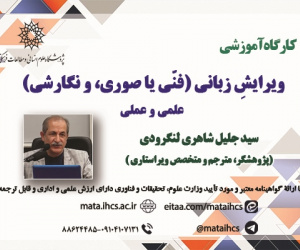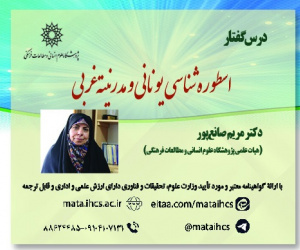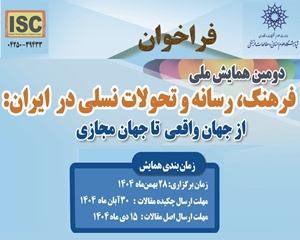بازشناسی کوشک قجری باغ فین براساس نوآوری در فضاسازی معماری و نقوش تزیینی (مقاله علمی وزارت علوم)
درجه علمی: نشریه علمی (وزارت علوم)
آرشیو
چکیده
تزیینات به کاررفته در معماری ایرانی از بی نظیرترین نقش ها و تصاویر در جهان است. آنچه مسلم است باغ های ایرانی نمادی از هنر و تجلی معماری و نگارگری هنرمندان زمان خود است. باغ فین کاشان یکی از منحصربه فردترین باغ ها در میان باغات ایران زمین است. عمارت کوشک قاجاری در این باغ چون نگینی می درخشد. ویژگی های اختصاصی این بخش از باغ فین چه ازنظر سازمان دهی فضایی و کالبدیِ باغ ایرانی و چه به لحاظ نقوش و تزیئینات آن، ضرورت بازشناسی علمی آن را موجب شده است. توجه به تناسبات و ترکیب بندی نقوش و تزیینات این بنا و به کارگیری آن در سایر هنرها ازجمله طراحی قالی، امری واجب در راستای حفظ و نگهداری این آثار است. بررسی و تجزیه وتحلیل طرح شمسه با اسلیمی ها و ختایی ها در سقف میانی عمارت کوشک قاجاری باغ فین امری ماندگار برای نمایش در سایر هنرهای ایرانی است. تجزیه وتحلیل این نقوش نشانگر این است که فرم های کلی این طرح و همچنین نقوش به کاررفته در این فرم ها هم خوانی و هماهنگی بسیاری برای استفاده در هنرهای ایرانی و به روز دارد و می تواند با کمی تغییرات جزئی با توجه به مواد و مصالح و ابزار مخصوص به کاررفته در هر رشته هنری، کمک کننده برای خلق آثاری بی بدیل و خلاقانه جدید باشد. روش این پژوهش، مطالعه موردی به صورت اسنادی- میدانی بوده و به شیوه توصیفی، تحلیلی، انطباقی انجام شده است؛ لذا بخش هایی از متن فاقد ارجاعات است. روش گردآوری مطالب و بهره بردن از آن ها در این پژوهش، براساس مطالعات کتابخانه ای و تحقیقات میدانی (عکاسی) ازطریق بررسی طرح های موجود در باغ فین کاشان است. به منظور تجزیه وتحلیل این نقوش کم نظیر باقی مانده تاریخی، و پی بردن به شیوه طراحی و ترسیم آن ها و کاربرد نوآورانه مجدد این نقوش در هنرهای دیگر به ویژه در طراحی قالی، طرح ها به شیوه خطی بازترسیم شده اند.Recognition of the Qajar Pavilion of Fin Garden through Innovation in Spatial Design and Decorative Motifs
The decorations in Iranian architecture are among the most unique patterns and imagery in the world. Without a doubt, Iranian gardens are symbols of art, serving as the manifestations of architecture and painting left by the artists of their era. The Fin Garden of Kashan stands out as one of the most unique examples of Iranian gardens, with the Qajar pavilion shining like a jewel in its heart. The unique spatial organization, physical characteristics, patterns, and motifs in this section of the Fin Garden demand its proper recognition. It is imperative to carefully consider the proportions and composition of the motifs and decorations in this building and employ them in other arts, such as carpet design, to preserve and maintain these works. Studying and analyzing the Shamseh (Sunburst motif) designs with Eslimi and Khatei (Iranian Arabesque) patterns on the middle ceiling of the Qajar pavilion can be a lasting display in other Iranian art forms. The analysis of these motifs indicates that the general forms of this design and the motifs used in these forms are highly compatible and in perfect harmony with Iranian and modern arts. These patterns can be utilized with a few minor tweaks with respect to the materials and special tools of each artistic field to help create unique and creative new works of art. This research is a case study in the form of a document-based field study and has been carried out with a descriptive, analytical, and adaptive approach, leading to sections of the text lacking references. The data collection and utilization in this study involved library sources and field research (photography) to examine the designs in the Fin Garden of Kashan. In order to analyze these unique motifs left from the past, understand their design and implementation methods, and reuse them in novel and innovative roles within other arts, particularly in carpet design, the designs have been drawn in an open linear fashion.








